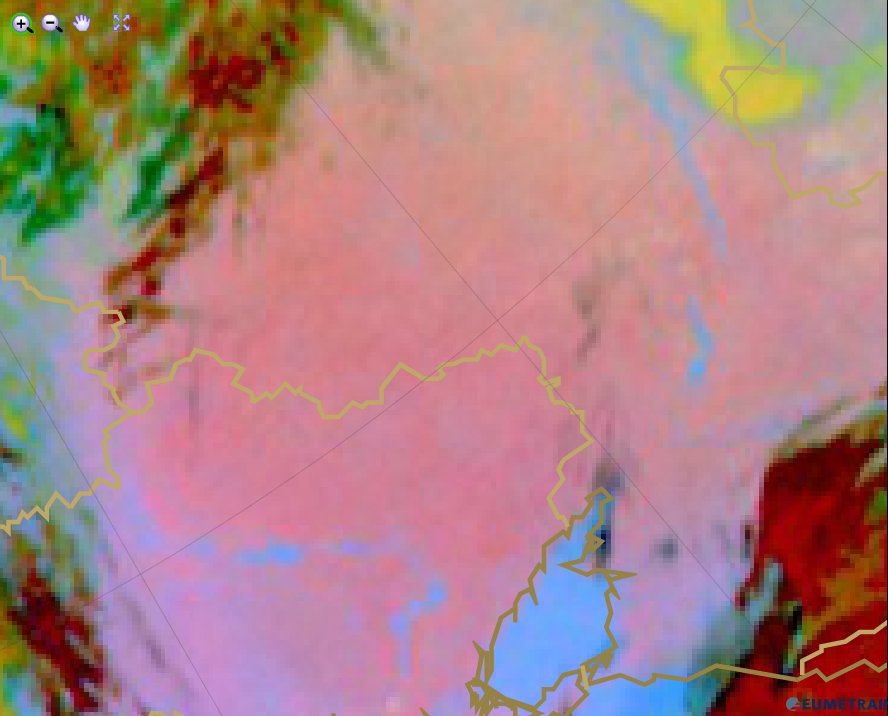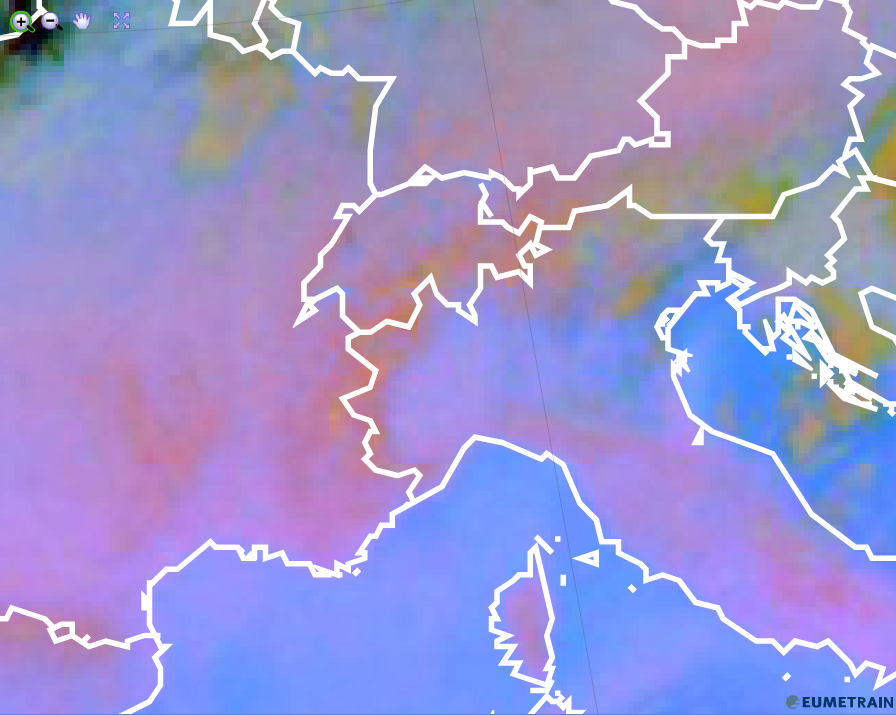Cloud free land
Cold cloud free land depict in a pink colour in the Dust RGB images.
The red colour beam reflects the brightness temperature difference (BTD) IR12.0 - IR10.8. The difference depends on the emissivity of the surface but also on the total water content of the troposphere. Accordingly, the BTD can vary from negative values to positive values (see recipe on the left side). The BT of channel IR12.0 is lower in regions with high humidity and the BTD more negative. The red colour contribution is stronger in case of a dry atmosphere and smaller when the atmosphere is more humid.
As the emissivity of vegetated ground is a little lower at 8.7 micrometer than at 10.8 micrometer, their BTD is small but positive. As for the green component a strong gamma correction (with 2.5 gamma) is applied, the green signal becomes medium.
The colder the surface, the weaker the blue colour contribution. On cold winter days and on cold summer nights the blue colour contribution is small.
The Dust RGB image below shows a cold summer night over cloud free Ukraine and Russia. Warm rivers and lakes (but also the sea) depict in blue.

Dust RGB from 26 August 2015, 00:00 UTC
Same date as for the DUST RGB image above, but the Central European region. The Alpine region and the Massif Central depict in a stronger red, while the Po valley shows in a blueish colour. The total water content of the atmosphere over the Alps is smaller than over the Po valley.

Dust RGB from 26 August 2015, 00:00 UTC
Explanation of the pink colour of cold, cloud free land in the Dust RGB (see the recipe):
In case of cold, cloud free (vegetated) land, the red (IR12.0 - IR10.8) colour beam contributes most (with a little bit of green), while the blue contribution is small. The resulting colour is pink.

